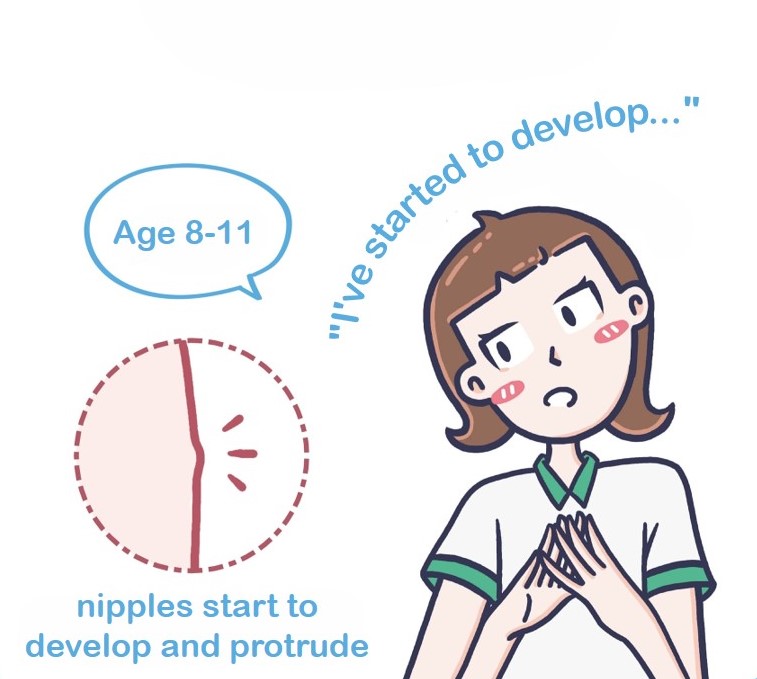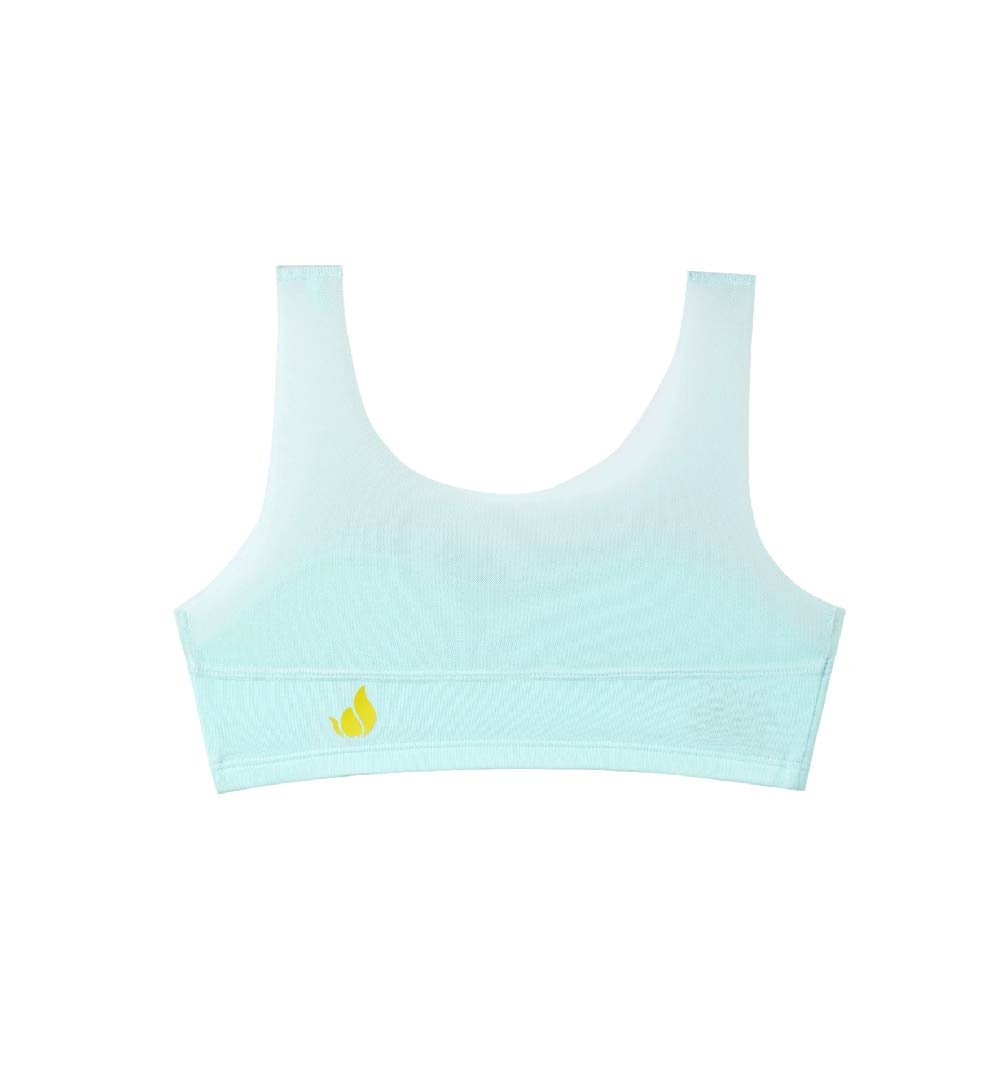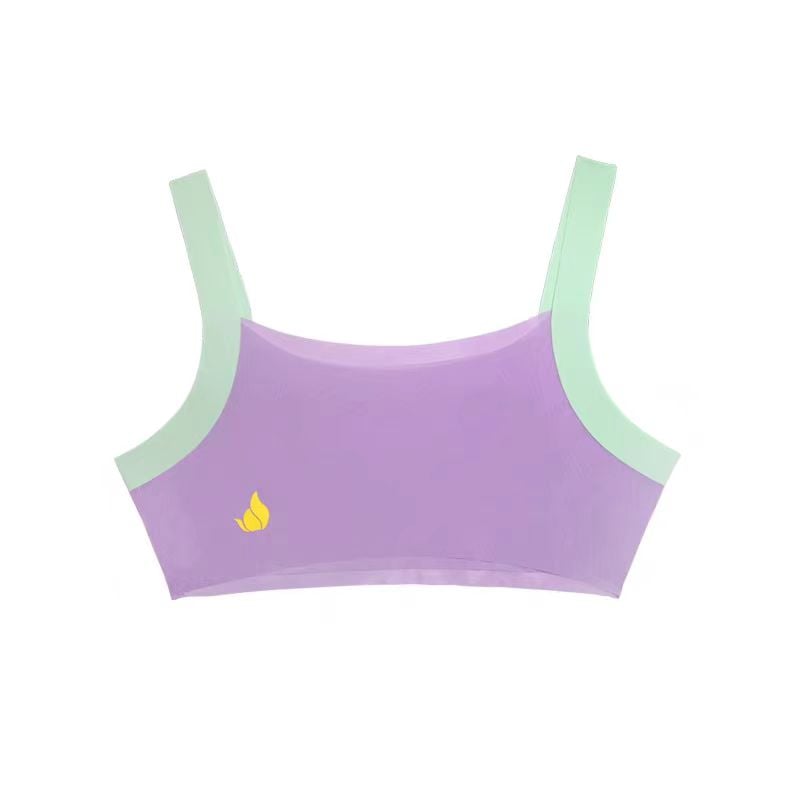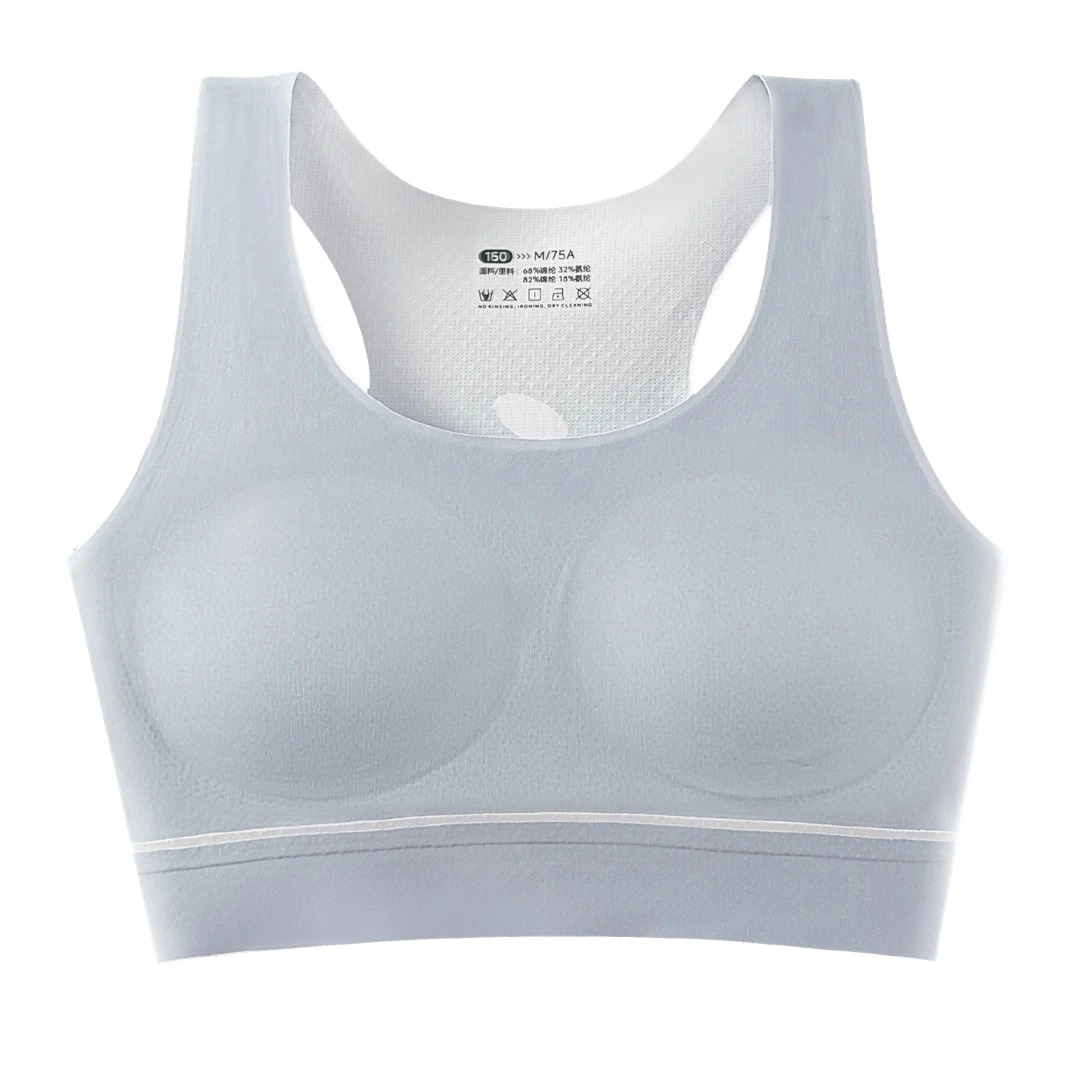Imagine the excitement and nervousness that comes with your daughter growing up. One of the biggest milestones in her journey to adolescence is wearing her first bra. It’s a moment filled with questions about timing, comfort, and style. As a mom, you want to ensure she feels supported and confident. Let’s explore how to find the perfect beginner bra for your growing girl, making this transition as smooth as possible.
When Is Your Daughter Ready for Her First Bra?
Signs of Breast Development
How do you know when it’s time for your daughter to start wearing her starter bra? The most common indicator is the appearance of breast buds – small, tender bumps under the nipples that signal the beginning of breast development. This typically happens between ages 8-13, though every girl develops at her own unique pace.
Girls often start wearing their first bra around age 11, but there’s no “right” age that applies to everyone. Some girls might be ready at 8, while others may not need or want a bra until 13 or 14. The timeline varies widely based on individual development.

Beyond Physical Signs: Emotional Readiness
Sometimes, the decision to get a first bra isn’t just about physical development. Your daughter might express interest in wearing a bra because:
-
She notices her friends starting to wear bras
-
She feels self-conscious about changes in her body
-
She wants the extra coverage under thin shirts or school uniforms
-
She sees wearing a bra as an exciting sign of growing up
These emotional factors are just as valid as physical development when deciding if it’s time for a starter bra. The most important thing is that your daughter feels comfortable and supported – both physically and emotionally.
Types of First Bras for Girls
Training Bras: The Classic First Step
Training bras represent the gentlest introduction to bras for young girls. Think of them as the bridge between not wearing anything and more structured bras later on. These simple, soft bras typically:
-
Have no underwire or complicated closures
-
Pull on easily over the head
-
Provide light coverage and minimal support
-
Come in comfortable, breathable fabrics like cotton and Modal

Training bras are perfect for girls who are just beginning to show signs of breast development and want something simple and comfortable.
Bralettes: Stylish Comfort
Bralettes offer slightly more style than basic training bras while maintaining the comfort that tweens need. These versatile options:
-
Feature prettier designs, sometimes with light lace details
-
Remain wire-free and comfortable for all-day wear
-
Offer a bit more shape than basic training bras
-
Come in various colors and patterns that pre-teens love

Many girls enjoy bralettes because they feel a bit more “grown-up” while still being age-appropriate and comfortable.
Sports Bras: Active Support
For active tweens who enjoy sports or physical activities, a soft sports bra might be the perfect first choice. These provide:
-
More support during movement and activities
-
Moisture-wicking fabrics for comfort during exercise
-
Compression to minimize movement and discomfort
-
Durable construction that stands up to active lifestyles

Look specifically for beginner sports bras designed for younger girls – they’re typically softer and more appropriate than adult versions.
Camisoles with Shelf Bras: Layered Solution
Some girls prefer a more gradual transition and feel most comfortable with camisoles that include built-in shelf bras. These 2-in-1 options:
-
Provide an extra layer under shirts
-
Include a lightly supportive shelf area for the chest
-
Eliminate the need to wear a separate garment
-
Often come with adjustable straps for a better fit
This option works well for girls who aren’t quite ready for a separate bra but want some light support and coverage.
What Makes the Great Starter Bras for Girls
Comfort Is Queen
When it comes to first bras for adolescent girls, comfort should be your top priority. During breast development, the chest area can feel tender and sensitive, making soft, non-irritating fabrics essential. The best training bras for girls feature:
-
Soft, breathable fabrics like cotton or cotton-blend materials
-
No scratchy tags or seams that might irritate sensitive skin
-
Gentle elastic that doesn’t dig into the skin
-
Smooth fabrics that won’t cause chafing
Suyiyi bras are specifically designed with tween comfort in mind, using ultra-soft fabrics that feel gentle against developing breast tissue.
Finding the Right Fit
A properly fitting first bra helps your tween feel secure and comfortable. When shopping for the first bras for girls, ensure:
-
The band fits snugly but not tight around the ribcage
-
There’s no uncomfortable gapping or pinching
-
Straps stay in place without digging into shoulders
-
The bra provides enough coverage to make your daughter feel comfortable
Remember that the goal of a beginner bra isn’t necessarily to create shape or lift – it’s primarily about comfort and coverage during this transitional time.
Easy to Wear Design
For growing girls just learning to wear bras, simplicity is key. The finest starter bras for girls should be:
-
Easy to put on and take off independently
-
Free from complicated closures or hooks
-
Made with stretchy fabrics that maintain their shape
-
Simple to care for and wash
Pull-on styles are typically the easiest for beginners, though some girls might prefer front-closure options if they have the dexterity to manage them.
How to Talk About First Bras with Your Tween
Starting the Conversation
Discussing beginner bras with your daughter doesn’t have to be awkward. Approach the topic naturally when you notice signs of development or if she brings it up herself. Try to:
-
Choose a private moment when you won’t be interrupted
-
Use matter-of-fact language that normalizes the conversation
-
Frame wearing a bra as a positive step, not something embarrassing
-
Let her know that every girl develops at her own pace
Remember that your attitude sets the tone – if you’re comfortable and positive, she’s more likely to feel the same way.
Shopping Together: Making It Special
Shopping for a first bra can be a special bonding experience. Consider these approaches to make it positive as a special mother-daughter experience rather than treating it as a chore:
-
Start by browsing options online together at home where she might feel more comfortable
-
Visit stores with good tween selections and knowledgeable staff
-
Let her choose styles and colors she likes (within appropriate options)
-
Consider getting measured professionally, but respect if she’s not ready for that
Choosing the Right Brand for Your Daughter’s First Bra
Why Quality Matters for First Bras
Not all tween bras are created equal. When selecting the ideal training bras for girls, consider brands that specifically design for tweens rather than simply scaling down adult styles. Quality beginner bras should:
-
Be designed specifically for developing bodies
-
Use appropriate, comfortable materials
-
Come in proper tween sizing
-
Offer styles that grow with your daughter
Comfort Factor: Bra Fabrics for Growing Girls
When selecting your daughter’s first bra, prioritize comfort and breathability. Here’s a breakdown of some common fabrics and their suitability for different skin types:
-
Cotton: A classic choice for its softness and breathability. It’s gentle on sensitive skin and familiar to most.
-
Modal: Similar to cotton in softness, modal is a type of rayon known for being even softer and more effective at wicking away moisture. Check Suyiyi’s sustainable training bras made with the Tencel™ Modal.
-
Mesh: Perfect for hot weather or active girls, mesh fabric provides excellent breathability and keeps things cool.
-
Silk: Luxuriously soft and gentle on the skin, silk bras can be a wonderful choice for girls with very sensitive skin.
-
Lycra: Often used in blends with other fabrics, Lycra adds stretch and recovery to bras. Check Suyiyi’s ultra thin transparent training bra with liquid Lycra elastic coating that provides light support that moves with the developing girls.
| Fabrics | Pros | Cons | Skin |
|---|---|---|---|
| Cotton | Softness and breathability | Less support and moisture-wicking | Suitable for sensitive skin |
| Silk | Luxuriously soft and gentle | Poor elasticity and difficult to care for | Suitable for sensitive skin |
| Modal | Softer and moisture wicking | May pill slightly with prolonged wear | Ideal for all sorts of skin |
| Mesh | Excellent breathability and keeps things cool | Less moisture wicking | Suitable for most skin types except very sensitive one |
| Lycra | Very stretchy and breathable | Not typically used alone in developmental bras | Ideal for all sorts of skin |
Why Suyiyi’s Training Bras for Girls Are a Great Choice
Finding the best starter bras for girls should be easy and comfortable. That’s why Suyiyi focuses on making bras and bralettes comfy and age-appropriate for tweens and teens. Here’s what makes our bras a good choice for your daughter:
-
Super-Soft Fabrics: We use fabrics that feel good against sensitive, developing breast tissue. Think comfy cotton like a t-shirt! and blends that keep her cool.
-
Simple Designs: Our bras don’t have wires or thick padding because wires can poke and feel uncomfortable. They’re made to be easy and comfy for young girls. We focus on making our training bras easy to put on and take off.
- Thoughtful Details: We include tag-free labels and seamless design to avoid irritation.
-
Comfort First: We focus on making sure that the bra your daughter wears feels so soft that it is perfect for sensitive skin. Suyiyi also uses innovative fabric blends like cotton and modal to create bras that are soft, gentle and moisture-wicking. A soft, supportive training bra can help them feel better.
Caring for First Bras: Tips for Longevity
Washing and Care
Teaching your daughter to care for her bras helps them last longer and stay comfortable:
-
Washing bras in cold water to preserve elasticity
-
Using mild detergent without harsh chemicals
-
Avoiding the dryer – air drying is gentler on fabrics
-
Storing bras flat or folded rather than twisting straps
These simple care habits help first bras maintain their shape and comfort.
When It’s Time for a New Bra
As your daughter continues to develop, she’ll eventually outgrow her first bras. Signs it’s time for new bras include:
-
The band riding up in back
-
Breast tissue spilling out the sides or top
-
Straps constantly slipping despite adjustment
-
Your daughter mentioning discomfort
As a general rule, replace her everyday bras and underwear every 3-4 months if she wear them regularly.
Frequently Asked Questions About First Bras for Tweens
How many first bras should my daughter have?
Most experts recommend starting with 2-3 bras – enough that your daughter always has a clean one available while allowing time to see if the style works for her before investing in more.
Should first bras have padding?
Light padding can provide nipple coverage for girls concerned about visibility through clothing, while thick padding isn’t necessary or recommended for first bras. Suyiyi offers options of with very light lining for modesty without adding bulk.
How do I measure my daughter for her first bra?
- Step 1: Grab a Soft Measuring Tape
- Step 2: Measure the Underbust
- Step 3: Measure the Overbust
- Step 4: Calculate the Bust Difference
- Step 5: Determine the Bra Stage
- Step 6: Choose the Bra Size
For more details, check our Size Guide.
What if my daughter doesn’t want to wear a bra yet?
There’s no rule saying girls must wear bras at a certain age or development stage. If she’s not interested yet but shows signs of development, camisoles with built-in support can be a good intermediate step.
How do I help my daughter feel confident about wearing her first bra at school?
Normalize the experience by reminding her many classmates are going through the same thing. Consider having her practice wearing her bra for a few days at home first to get comfortable with the feeling.
Embracing This Special Milestone
The journey to finding the ideal starter bras for girls marks an important developmental milestone. With the right approach, shopping for first bras can become a positive bonding experience rather than an awkward obligation.
Remember that every girl develops at her own pace – there’s no single “right time” for a first bra. By focusing on comfort, appropriate styling, and your daughter’s feelings, you can help make this transition smooth and positive.
Whether your daughter is showing early signs of development or has friends who are starting to wear bras, Suyiyi offers the perfect selection of training bras for girls that prioritize comfort, quality, and age-appropriate design.
Finding the best starter bras for girls doesn’t have to be complicated – with the right information and approach, you can help your daughter feel comfortable and confident as she takes this important step in her development journey.
